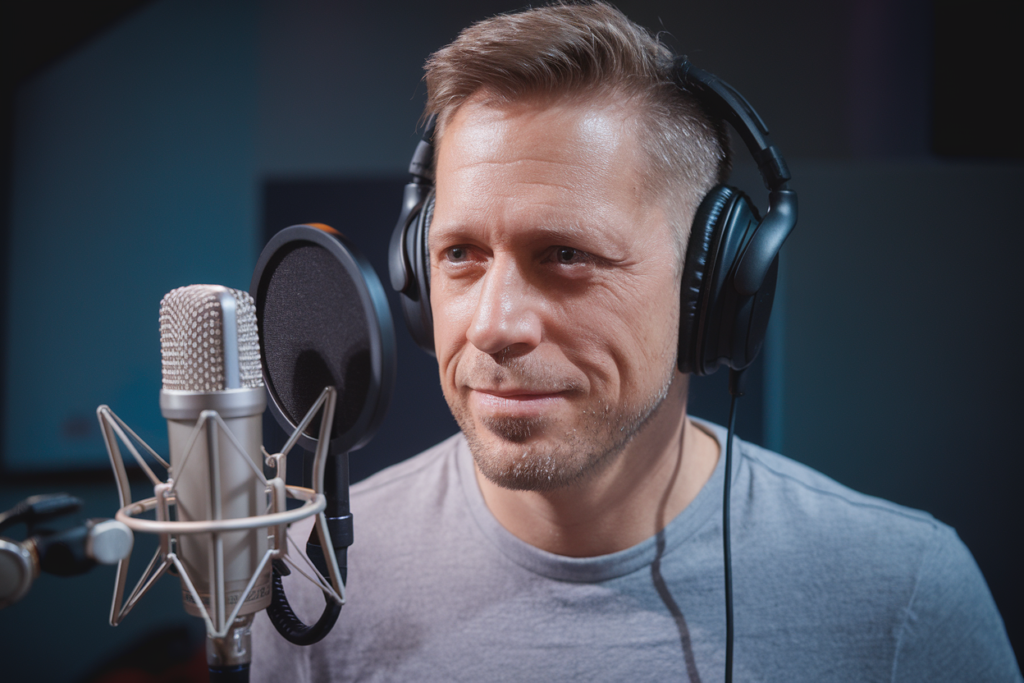Key Takeaways
- Distinct Accents: German, Austrian, and Swiss accents have unique characteristics despite sharing the same language, influenced by regional phonetics and cultural backgrounds.
- Phonetic Variations: Pronunciation of vowels and consonants varies among the accents; standard German features clear articulation, while Austrian accents tend to be softer and more melodic.
- Regional Diversity: Each country showcases significant regional variations in accents; for instance, Bavarian in Germany has distinct qualities compared to Viennese or Tyrolean dialects in Austria.
- Cultural Influence: Historical contexts and cultural factors shape how these accents developed over time, affecting communication styles and social interactions across regions.
- Enhanced Communication: Understanding these nuances not only improves language comprehension but also fosters stronger connections with native speakers from different backgrounds.
Ever wondered why German, Austrian, and Swiss accents sound so different? While they all share a common language, the nuances in pronunciation can leave even seasoned speakers scratching their heads. Understanding these accents not only enhances your appreciation of the language but also helps you connect better with native speakers.
Overview of German, Austrian, and Swiss Accents
German, Austrian, and Swiss accents present unique characteristics that set them apart while sharing the same linguistic foundation. Understanding these differences enhances your appreciation for the language and helps in effective communication.
German Accent
The standard German accent is primarily associated with northern Germany. It features clear enunciation and a relatively flat intonation pattern. Native speakers often use precise consonants and a distinct vowel pronunciation. This clarity makes it easier for learners to grasp spoken words.
Austrian Accent
Austrian accents vary significantly across regions but generally exhibit softer tones compared to their German counterparts. The pronunciation of vowels tends to be rounder, creating a melodic quality in speech. Austrians may also employ specific phrases or idiomatic expressions unique to their dialects, adding richness to conversations.
Swiss Accent
Switzerland showcases diverse accents depending on its linguistic regions—German-speaking Swiss have an accent influenced by both standard German and local dialects. They often pronounce certain sounds differently, leading to a more sing-song quality in speech patterns. Additionally, code-switching between languages is common among Swiss speakers due to the country’s multilingual nature.
Recognizing these nuances not only aids comprehension but also fosters stronger connections when interacting with native speakers from different backgrounds. Whether you’re exploring voiceovers or engaging in conversation, understanding accents enriches communication efforts and promotes cultural appreciation.
Differences in Phonetics
Understanding the phonetic differences between German, Austrian, and Swiss accents reveals intriguing nuances that can impact communication. These variations stem from regional influences and cultural factors that shape how speakers articulate sounds.
Vowel Sounds
Vowel pronunciation varies significantly across these accents. Standard German often employs sharp, clear vowel sounds, making it easier for learners to grasp. In contrast, Austrian vowels tend to be softer and rounder. For instance, the German word “schön” (beautiful) is pronounced with a more distinct “o” sound in standard German but may come off as slightly more rounded in Austrian speech. Swiss accents showcase a unique twist; they exhibit an emphasis on diphthongs and can blend multiple languages’ vowel qualities due to Switzerland’s multilingual environment.
Consonant Variations
Consonants also differ notably among these regions. Standard German features crisp consonant articulation, often marked by precise pronunciation of voiceless stops like “k” and “p.” Austrian accents might soften these consonants slightly, giving them a gentler touch. Meanwhile, Swiss speakers frequently drop certain consonants or alter their intensity based on local dialects—this contributes to the sing-song quality characteristic of many Swiss accents. Recognizing these variations enhances comprehension and fosters better connections with native speakers across all three regions.
By tuning into these phonetic distinctions, you not only improve your understanding of the language but also enrich your interactions with others who share this linguistic tapestry.
Regional Variations
German, Austrian, and Swiss accents showcase remarkable diversity within the same language. Understanding these regional variations enhances your appreciation for each culture and improves communication with native speakers.
German Regional Accents
German regional accents vary significantly across the country. In northern Germany, you’ll find a standard accent characterized by clear enunciation and a flat intonation pattern. This clarity makes it easier for learners to grasp the language’s nuances. Moving south, accents become more diverse: Bavarian features softer tones and different vowel sounds, while Swabian introduces unique phonetic twists that may surprise even seasoned linguists. Each region adds its flavor to the language, enriching your understanding of German.
Austrian Dialects
Austrian dialects present an intriguing blend of influences from neighboring countries. Generally perceived as melodic, these dialects highlight softer tones and rounder vowels compared to their German counterparts. For instance, in regions like Vienna or Styria, you might notice distinct pronunciations that can sound quite musical. Moreover, various sub-dialects exist within Austria itself; Tyrolean has its own unique characteristics that set it apart even further. Engaging with these dialects not only helps improve your comprehension but also fosters deeper connections with Austrian speakers.
Swiss German Variants
Swiss German is perhaps one of the most distinctive variants among the three languages discussed here. Influenced by Switzerland’s multilingual environment, Swiss accents often incorporate elements from French or Italian due to proximity and cultural exchange. You’ll hear a sing-song quality in many Swiss voices as they employ diphthongs alongside local vocabulary variations—this results in a dynamic listening experience that’s both engaging and challenging at times! Code-switching between languages is common too; being open-minded about these shifts can enhance your interactions in this vibrant linguistic landscape.
Understanding these regional variations enriches your experience with German-speaking communities. By recognizing the unique characteristics of each accent or dialect, you position yourself better for meaningful conversations and connections across cultures.
Influence of Culture and History
Accents from Germany, Austria, and Switzerland reflect deep-rooted cultural and historical influences. Understanding these can enhance your appreciation for the language.
Historical Context of Each Accent
German accents evolved through centuries of political changes and regional developments. The standard German accent, often linked to northern Germany, emerged during the 19th century amid efforts to unify the diverse German states. Austrian accents developed in a similar way but were shaped by the Habsburg Empire’s multicultural environment, incorporating elements from various languages spoken within its borders. Swiss accents show a unique blend due to Switzerland’s multilingual nature, with influences coming from French, Italian, and Romansh speakers. This history adds layers to how each region communicates today.
Cultural Influences on Speech
Cultural factors play a significant role in shaping speech patterns across these regions. In Germany, straightforwardness often translates into clear articulation and direct communication styles. Austrians tend to infuse warmth into their speech with softer tones that reflect their more relaxed social interactions. Meanwhile, Swiss speakers frequently switch between languages based on context or audience expectations, which creates a dynamic vocal landscape full of variety. These cultural nuances enhance not just how people speak but also how messages are perceived—understanding them can foster deeper connections in conversations.
By recognizing these influences on accents and dialects, you gain valuable insights that enrich your experience with the language and its speakers.
Conclusion
Exploring the accents of German, Austrian, and Swiss speakers reveals a rich tapestry of linguistic diversity. Each accent not only carries unique phonetic qualities but also reflects cultural nuances that enhance communication.
By appreciating these differences you can deepen your understanding of the language and foster connections with native speakers. Whether it’s the melodic tones of Austrian speech or the crisp clarity of standard German each accent offers a distinct flavor to your language journey. Embrace these variations to enrich your interactions and enjoy meaningful conversations across cultures.
Frequently Asked Questions
What are the main accents in German-speaking countries?
The main accents include standard German from northern Germany, Austrian accents with softer tones, and Swiss accents influenced by local dialects. Each accent has unique characteristics that can impact understanding.
How do Austrian accents differ from standard German?
Austrian accents typically feature rounder vowel pronunciations and a melodic quality. Different regions in Austria also have distinct sub-dialects that further enrich the language’s diversity.
Why is it important to understand these accents?
Understanding these accents enhances language appreciation and fosters better communication with native speakers. It helps bridge cultural gaps and improves interactions across different regions.
What phonetic differences exist between these accents?
Phonetically, standard German has sharp vowels while Austrian vowels are softer and rounder. Swiss speakers often use diphthongs, blending various vowel qualities due to their multilingual environment.
How did historical factors influence these accents?
Historical developments shaped each accent uniquely; for example, the Habsburg Empire influenced Austrian speech patterns, while political changes led to the emergence of a unified standard German accent in the 19th century.







